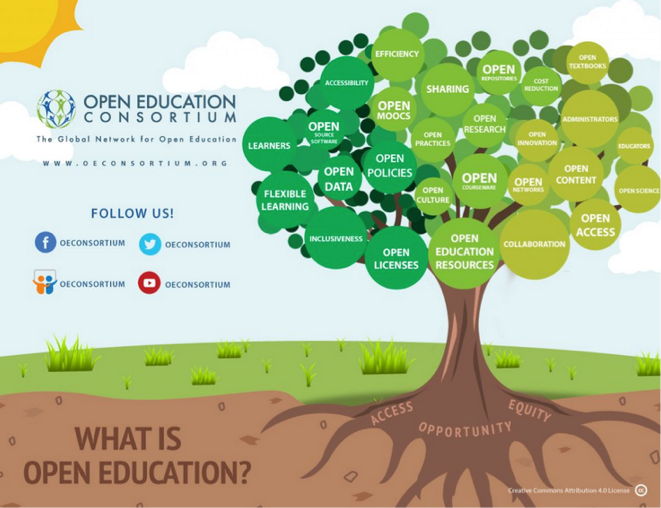Open Learning
Completion requirements
Summary is prepared using Training material of ReOpen project
1. What is Open learning?
An open source, an open society, an open government, etc. - the word
"open" is frequently used in today's world. However others like "rights,"
"access," "use," "transparent," and
"participatory" are just a few of the meanings of “open”. In the
context of education, the importance of "use" and "access"
plays a crucial role (Pomerantz & Peek 2016). However there are other
related "open" educational meanings, which emphasizes the broad
spectrum of aspects of open education (Figure 1).

Figure 1: What is open education?
Open education is an approach to education based on cooperation, transparency, relevance, participation and effectiveness. The best educational traditions are used to ground it: sharing knowledge, developing skills and understanding, focusing on effective learning, and connecting with tools of the 21st century - digital and online. “Open education is a modern approach to a changing world, giving everyone access to education and knowledge, providing teachers with tools to make learning more effective and fun for all students, provide students with more opportunities and ensure that education is relevant and up to date.”[1]
A more detailed example of open education is made by Mulder et al. (2015), Fig. 2. In this quadrangle area, open education has five elements, two of which are directly related to learning, ie "open to learner needs" and "open learning services". Based on this perspective, open education as the main area of the subject, and open learning is an essential part of it.